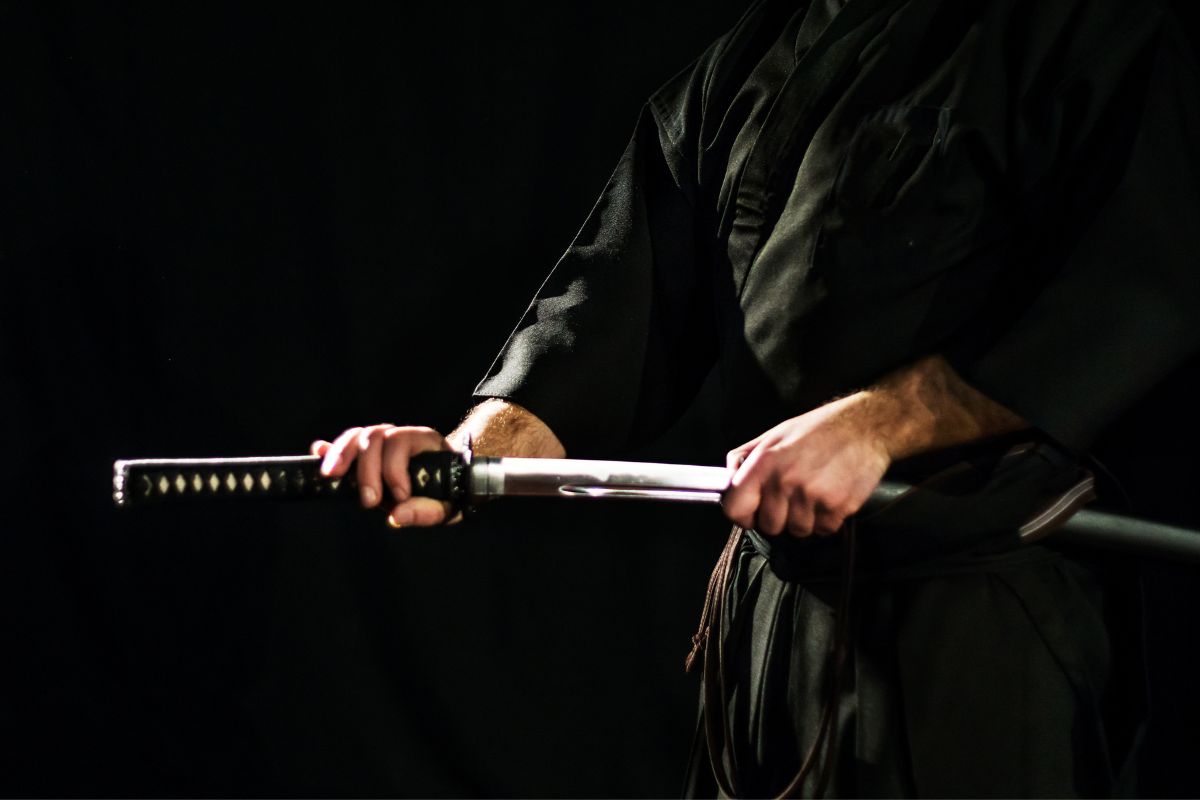Samurai played an important role in Japan’s history. However, today they only exist in popular cultures, such as in movies and television shows. This is because samurai no longer exist in the modern world.

Yet, if you wish to learn about samurai when they were in their prime, you’ve come to the right place. The age of the samurai lasted in Japan from 1185 to 1868.
During this time, samurai governed Japan. However, during the Meiji Restoration, the Samurai started to lose their power thanks to military reforms.
Here’s everything that you need to know about this fascinating period of Japanese history!
What Are Samurai?
The word “samurai” refers to the elite warrior caste that existed in Medieval Japan. These warriors soon became a part of Japan’s nobility. This role was hereditary, meaning that it passed from generation to generation.
Samurais are known for their suits of armor and their tactical fighting style. Samurai warriors were trained to use a range of weapons, including yumi (longbows) and Chokutō swords.
Samurai obeyed a moral code known as Bushido. This ethical code of conduct emphasized virtues such as loyalty, justice, and courage. The Bushido code is still reflected in modern Japanese society.
Despite samurais no longer existing in modern times, they remain a prominent part of Japanese culture. Not to mention, the iconography of the samurai is renowned across the globe.
The Age Of The Samurai: 1185-1868
The Kamakura Shogunate (1185-1333)
Samurai first rose to power during the Kamakura Period, which started in 1185. During this period, the Minamoto family established a new government that was based in Kamakura.
The first shogun of this period was Minamoto no Yoritomo, who adopted this role in 1192. The Samurai fought in battles that helped the Minamoto clan achieve this power, such as the Battle of Dan-no-ura.
Minamoto no Yoritomo provided samurai with the ability to arrest rebels. This government relied on a system of samurai to maintain control throughout Japan.
As a result, Japan became a feudal system. Essentially, this means that people are given land in exchange for military loyalty.
Samurai were used to keep the peace across Japan, allowing them to accumulate power and resources. This includes lands, which these warriors could take from the aristocracy.
As a result of this increase in power, samurais became increasingly influential in the imperial court. It was at this point that Samurai became their own ruling class within Japan.
The samurais also played a vital role during the Mongol invasions of Japan. Kublai Khan, a member of the Yuan dynasty, launched a military conquest of Japan between 1274 and 1281.
Throughout Japan, samurai fended off the Mongol invasion, despite often being significantly outnumbered. This includes the attempted Invasion of Tsushima, during which a small group of local samurai bravely fought against thousands of invaders.
It is believed that across Japan, there were only 10,000 samurai warriors to face the invading army of approximately 40,000 men. Luckily, the first attempted invasion of the Mongols in 1274 came to an end when most of the Yuan ships went missing during a thunderstorm.
After this attempted invasion, steps were taken to protect Japan from further attacks. Namely, a large stone wall, known as Genkō Bōrui, was erected in 1276. This wall covered Hakata Bay.
In 1281, the Mongol army once again tried to invade Japan. The fleet attempted to land at Hakata Bay as well as Nagato Province.
During the Battle of Kōan, which refers to the attempted invasion of Hakata Bay, samurai warriors prevented the invading fleet from landing on the shores. Samurai were also sent in small boats to kill members of the Yuan fleet during the night.
Once again, the Yuan fleet was devastated by a thunderstorm. Consequently, soldiers within the Yuan fleet were either killed by samurais or drowned in the waters. Thus, the Mongols were unable to seize control of Japan.
As one can imagine, the cost of the war was high for the Japanese government. The Japanese people became discontent, as the government struggled to pay soldiers who fought in these battles.
The Ashikaga Shogunate (1336-1573)
The Kamakura Shogunate did not rule Japan for much longer following these attempted invasions. A competing family of samurai, named the Ashikaga Shogunate, took power from the Kamakura shogunate in 1333.
Moreover, the Kenmu Restoration, which reigned for just 3 years, was overthrown in 1336. The Ashikaga rose to power and moved the government back to Kyoto.
This period saw the emergence of the daimyo. These landowners were loyal to the shogun. Essentially, daimyo were positioned above samurai. Daimyos often hired samurai, who were considered more minor nobility.
The Ashikaga Shogunate often had to deal with internal conflict between different samurai. The samurai often fought over territory.
This period also saw the concept of the samurai changing. During battles, large infantries, known as ashigaru, would be utilized. This changed the way that the Japanese fought wars, moving them away from the tactics formerly devised by the samurai.
The Tokugawa Shogunate (1603-1868)
After the Ashikaga Shogunate collapsed, the Tokugawa Shogunate eventually took control of Japan. This Shogunate wisely made the country into a bureaucratic system, thus increasing its power.
As a result, samurai were not seen as warriors anymore. Instead, they became bureaucrats. The samurai worked under the daimyo. The daimyo was the top social class in Japan. Beneath this class was the samurai, who were then proceeded by farmers, artisans, and merchants/ traders.
The government feared the potential for a samurai rebellion and so took steps to limit their power. For instance, daimyos were forced to cut the size of their armies.
Plus, many samurai faced poverty. This was because the government capped taxes. However, these caps were not adjusted for inflation. Consequently, the tax that samurai collected was becoming increasingly less valuable.
The later years of the Tokugawa Shogunate, known as the Bakumatsu, marked the end of the age of samurai. Military reform was largely responsible for the disappearance of the samurai.
This was largely a time of peace, and so samurai warriors were not needed for the most part. Furthermore, Japan transitioned from a feudal society to an empire by 1868, meaning that there was no place for samurai.
Aftermath
By the 1870s, the samurai accounted for just 5% of the Japanese population. As a result, they were systematically erased from Japanese society following this.
The government realized that samurai salaries were high, resulting in them being transformed into government bonds. Samurai also lost the ability to wield katanas.
Japan’s military also abandoned the military ideology of the samurai. This was because it focused on individual authority. Instead, the military established a strict command chain, which could not coincide with the samurai’s sense of individuality.
Disenfranchised samurai participated in the Satsuma Rebellion in 1877. However, this poorly organized rebellion led to defeat for the samurai. Their leader, Saigō Takamori, was shot and died in September 1877.
Under the Meiji Restoration, samurai were no longer considered a social class. They instead became known as Shizoku, a social class that also eventually became non-existent in 1947. This remains the same today. Thus, the age of the samurai ended in 1868.
Final Thoughts
Samurais play a fascinating part in Japan’s rich history and culture. Despite the removal of the Samurai class from Japanese society, samurai live on through their legacy and the warrior tales of bravery. As a result, many people still fantasize about samurai warriors!
- 16 Best Websites To Watch Japanese Movies With English Subtitles - May 11, 2023
- Is ZIPAIR The Best Airline For Traveling To Japan? - May 11, 2023
- Ryu Murakami Vs Haruki Murakami – Which One Should You Read? - May 11, 2023



![20 Best Japanese Directors [And Their Most Famous Movies] 20 Best Japanese Directors [And Their Most Famous Movies]](https://justaboutjapan.com/wp-content/uploads/2023/05/20-Best-Japanese-Directors-And-Their-Most-Famous-Movies-150x150.jpg)




